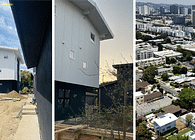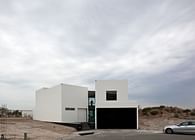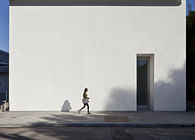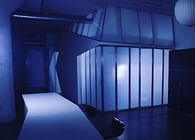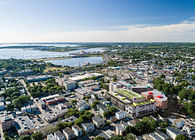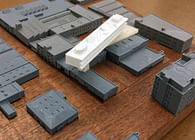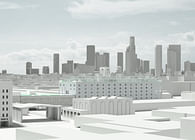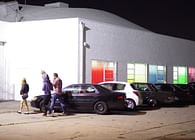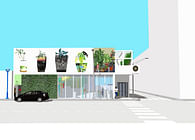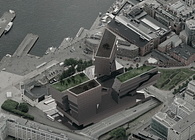
Oficina Martinez Zellner has designed a public project situated at the intersection of digital marketing and social impact. Proposed as possibly the first true "Green Screen," the outdoor advertising venue was inspired by West Hollywood's forgotten agricultural past and its pioneering exposed wood-framed stage sets that paved the way for today's back lots and soundstages.
Intended for the Sunset Strip, the Green Screen was created to be a carbon-neutral, food and energy-producing, self-powering digital billboard. The Green Screen links the past to the future by proposing something new: a pilot project for local, community-based, rooftop, urban, micro-urban agriculture and a California Native Living Pollinator Wall fused to a mass timber, solar-powered, interactive, and green 21st-century LED digital billboard.
To design the project, Oficina Martinez Zellner teamed and consulted with several leading names in Landscape Architecture, Sustainable Design Engineering, Urban Agriculture, Mass Timber Construction, and LED Technology: Agency Artifact, Buro Happold, Vertical Harvest, Timberlab, and the Consumer Experience Group.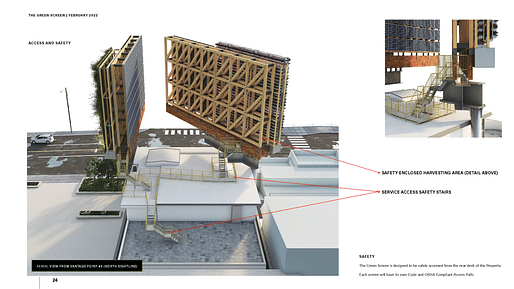

Oficina Martinez Zellner specifically partnered with Vertical Harvest, an organization that creates urban farms on underutilized land, or in this case, a billboard on the iconic Sunset Strip. Applying a Controlled Environment Agricultural (CEA) technology, the aim was to deliver healthy food to West Hollywood's unhoused community– creating a scalable Community Food Source to distribute lettuce, tomatoes, micro-greens, and edible flowers to local food kitchens.*
The Green Screen was designed with the following five guiding principles, to provide:
1. A solar-powered, Self-Irrigating, Sustainable, Net Zero, Carbon-Neutral, Drought-Aware Billboard;
2. A viable, scalable Community Food Source project for equitably distributing lettuce, tomatoes, edible greens and edible flowers to local food kitchens;
3. An inclusive urban agriculture community training and long-term employment program; aimed at underserved populations;
4. A California Native Living Pollinator Wall: a Micro Urban Habitat and Sanctuary for Native Bird & Insect Species;
5. A valuable pedestrian community experience-- an urban learning moment that re-greens the Sunset Strip by recalling its green agricultural history-- connecting viable, sustainable, urban micro-farming to entertainment and advertising.
The Green Screen is intended to be more than a living wall; it is an adventure in urban farming with a story and a purpose. In short, the Green Screen is a next-generation green billboard, the first of its kind, and a model for other sustainable urban digital advertising programs.
*As designed, the Green Screen could produce up to 12,270 pounds annually of lettuce, micro greens, and other nutritious green vegetables, to be distributed to local food kitchens and community groups serving the unhoused, low-income families and people with disabilities. Based on Vertical Harvest's current operations in Jackson Hole, Wyoming, this crop yield would be sufficient to provide vegetables for up to 2500 meals per month or 30,000 meals annually.
PROJECT TEAM
Design: Officina Martinez Zellner, Peter Martinez Zellner with Juan Pablo Maisonneuve. Landscape Architecture: Artifact Agency, Christopher Torres Media/Tech: Consumer Experience Group, Jeremy Kolieb Urban Agriculture: Vertical Harvest, Nona Yehia Mass Timber Construction: Timberlab, Hans-Erik Blomgren Engineering & Sustainability: Buro Happold, Ron Elad
Status: Competition Entry
Location: West Hollywood California
Firm Role: Designer
